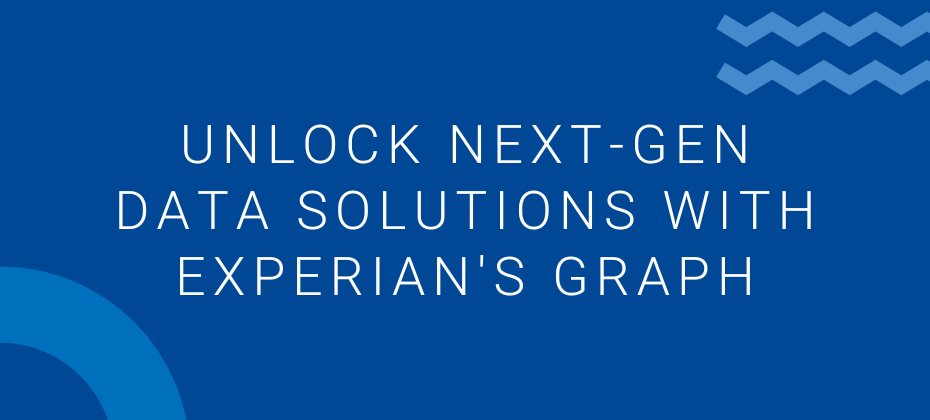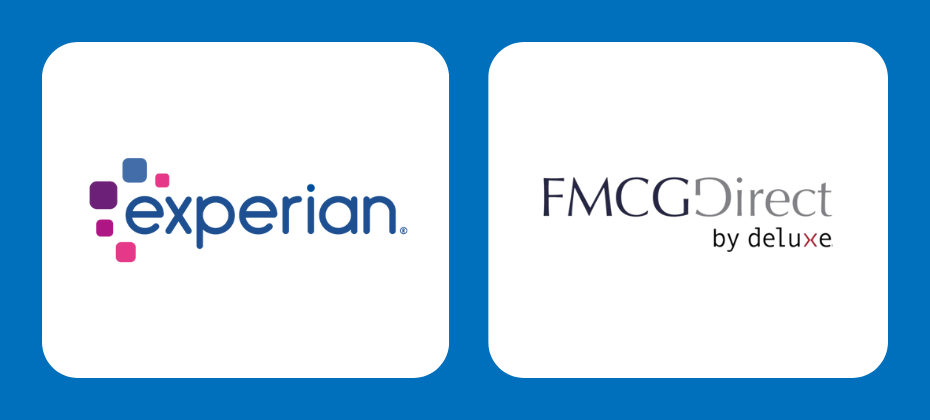“Lorem ipsum dolor sit amet, consectetur adipiscing elit, sed do eiusmod tempor incididunt ut labore et dolore magna aliqua. Ut enim ad minim veniam, quis nostrud exercitation ullamco laboris nisi ut aliquip ex ea commodo consequat. Duis aute irure dolor in reprehenderit in voluptate velit esse cillum dolore eu fugiat nulla pariatur. Excepteur sint occaecat cupidatat non proident, sunt in culpa qui officia deserunt mollit anim id est laborum.”

“Lorem ipsum dolor sit amet, consectetur adipiscing elit, sed do eiusmod tempor incididunt ut labore et dolore magna aliqua. Ut enim ad minim veniam, quis nostrud exercitation ullamco laboris nisi ut aliquip ex ea commodo consequat. Duis aute irure dolor in reprehenderit in voluptate velit esse cillum dolore eu fugiat nulla pariatur. Excepteur sint occaecat cupidatat non proident, sunt in culpa qui officia deserunt mollit anim id est laborum.”
“Lorem ipsum dolor sit amet, consectetur adipiscing elit, sed do eiusmod tempor incididunt ut labore et dolore magna aliqua. Ut enim ad minim veniam, quis nostrud exercitation ullamco laboris nisi ut aliquip ex ea commodo consequat. Duis aute irure dolor in reprehenderit in voluptate velit esse cillum dolore eu fugiat nulla pariatur. Excepteur sint occaecat cupidatat non proident, sunt in culpa qui officia deserunt mollit anim id est laborum.”

“Lorem ipsum dolor sit amet, consectetur adipiscing elit, sed do eiusmod tempor incididunt ut labore et dolore magna aliqua. Ut enim ad minim veniam, quis nostrud exercitation ullamco laboris nisi ut aliquip ex ea commodo consequat. Duis aute irure dolor in reprehenderit in voluptate velit esse cillum dolore eu fugiat nulla pariatur. Excepteur sint occaecat cupidatat non proident, sunt in culpa qui officia deserunt mollit anim id est laborum.”
test page quote
“Lorem ipsum dolor sit amet, consectetur adipiscing elit, sed do eiusmod tempor incididunt ut labore et dolore magna aliqua. Ut enim ad minim veniam, quis nostrud exercitation ullamco laboris nisi ut aliquip ex ea commodo consequat. Duis aute irure dolor in reprehenderit in voluptate velit esse cillum dolore eu fugiat nulla pariatur. Excepteur sint occaecat cupidatat non proident, sunt in culpa qui officia deserunt mollit anim id est laborum.”
My Heading Test

“Lorem ipsum dolor sit amet, consectetur adipiscing elit, sed do eiusmod tempor incididunt ut labore et dolore magna aliqua. Ut enim ad minim veniam, quis nostrud exercitation ullamco laboris nisi ut aliquip ex ea commodo consequat. Duis aute irure dolor in reprehenderit in voluptate velit esse cillum dolore eu fugiat nulla pariatur. Excepteur sint occaecat cupidatat non proident, sunt in culpa qui officia deserunt mollit anim id est laborum.”
veniam, quis nostrud exercitation ullamco laboris nisi ut aliquip ex ea commodo consequat. Duis aute irure dolor in reprehenderit in voluptate velit esse cillum dolore eu fugiat nulla pariatur.
Excepteur sint occaecat cupidatat non proident, sunt in culpa qui officia deserunt mollit anim id est laborumExcepteur sint occaecat cupidatat non proident, sunt in culpa qui officia deserunt mollit anim id est laborumExcepteur sint occaecat cupidatat non proident, sunt in culpa qui officia deserunt mollit anim id est laborum

Cuebiq’s mission, as an offline intelligence and measurement company, is to deliver the most accurate and reliable insights on how digital marketing efforts impact offline consumer behavior. This case study shows how Cuebiq, despite signal loss, partnered with Experian to continue delivering in-store lift analyses. To achieve this, Cuebiq used Experian’s Activity Feed to resolve digital ad exposures to in-store purchases, so that marketers could know the effectiveness of their clients’ media campaigns. Activity Feed helped Cuebiq increase its match rates by using all the identifiers supported in Experian’s signal-agnostic Digital Graph, reducing its reliance on third-party cookies. By partnering with Experian, Cuebiq could help their clients, marketers, more accurately measure their campaigns and optimize their media. What is Activity Feed? Experian’s Activity Feed pulls together fragmented digital event data from all digital channels, including browsers like Safari and Firefox that restrict traditional tracking methods. Activity Feed ingests and ties this digital ad exposure data to household or individual profiles hourly, helping clients associate that data to offline purchase activity made by that household or individual. Activity Feed plays a crucial role in overcoming fragmented data and helping marketers accurately measure their cross-channel marketing efforts. Challenge: Increasing match rates across digital platforms Cuebiq wanted to enhance how well they connect digital ad exposures, across web, mobile and connected TV (CTV) to specific mobile ad IDs (MAIDs), of those who visited clients’ stores. They needed a single technology partner who could collect data across these environments and improve these connections, especially as iOS updates, like iOS 14.5, posed potential challenges. With the ability to resolve exposures to households, individuals, and MAIDs to then facilitate attribution of digital exposures to offline store visitation, Cuebiq could continue to provide accurate reports on how online ads impact offline consumer behavior. This clarity in data enables their clients to fine-tune their marketing strategies. Cuebiq’s key objectives included: Resolving digital exposures to MAIDs Increasing overlap of offline and online data Improving the effectiveness of offline measurement offerings Activity Feed: The solution to increase match rates Cuebiq used Activity Feed to resolve data from cookieless environments like Safari to a single household or individual and saw significantly higher match rates. Cuebiq was able to track cross-channel media exposures, resolve them to MAIDs, and then use the Activity Feed output to correlate in-store visitation and sales to their clients’ media campaigns. Cuebiq also implemented the Experian pixel, which they placed to track all their marketers’ impressions (mobile, CTV, web traffic, etc.). The Experian pixel collects information in real-time, such as: Timestamp Cookies Device ID (MAID/CTV) when available IP address User-Agent Impression ID “Before we started working with Experian, we couldn’t fully maximize ad views across the complex digital landscape. In just a few weeks, they were able to maximize the match rate across the fragmented digital inventory, solving a huge problem when it comes to cross-channel attribution.” Luca Bocchiardi, Director of Product, Cuebiq Results Activity Feed combines separate data streams and matches them back to a household. This enables Cuebiq to expand household IDs and accurately identify MAIDs that are seen in-store for cross-channel measurement. Over a 21-day period, Cuebiq passed ~1 billion events to Experian. Activity Feed resolved 85% of total events to a household, 91% of which were tied to MAIDs. By implementing Activity Feed, Cuebiq was successfully able to: Gain clearer insights into the success of their client‘s campaigns Match consumer engagements in a privacy-compliant manner Tell the story of the key performance indicators (KPIs) related to their marketing efforts Prepare for a cookieless future with higher match rates Activity Feed is prepared for a cookieless future and uses alternative IDs, like ID5 IDs, hashed emails, and IPs for identity resolution, ensuring no reliance on third-party cookies. Experian remains fully committed to exploring a suite of next-generation solutions and prioritizing continued testing of different industry solutions, including the Google Privacy Sandbox, to help customers prepare for a future without cookies. We’ve identified six viable alternatives to third-party cookies, how these alternatives fall short, and how Experian can help you navigate these alternatives. “Experian’s customer service is extremely efficient and collaborative. We trust them to keep putting our business first long-term.”Luca Bocchiardi, Director of Product, Cuebiq Download the full case study to discover how Cuebiq used Activity Feed to overcome their challenges. Your path to maximizing match rates and resolving data from cookieless environments starts here. Download the full case study About Cuebiq Cuebiq is transforming the way businesses interact with mobility data to providing a high-quality and transparent currency to map and measure offline behavior. They are at the forefront of all industry privacy standards, establishing an industry-leading data collection framework, and making it safe and easy for businesses to use location data for innovation and growth. To learn more, visit their website at www.cuebiq.com Latest posts

Today, Experian announced a suite of next-generation solutions that will help marketers navigate the challenges of cookie deprecation. Powered by the Experian Graph, these solutions will enable marketers to maintain behavioral targeting at scale. In partnership with Audigent, Experian announced the early-stage limited availability of Experian Audiences inside the Privacy Sandbox through the Protected Audiences API. Experian has also co-developed, with Audigent, an AI-driven contextual targeting solution layered with Experian’s rich Experian Marketing Data to continue delivering marketers scale and performance from their campaigns. Finally, Experian continues to evolve its signal-agnostic Graph, including coverage for industry-leading universal IDs, and plans to support IPv6 and phone-based UID2s. With these solutions, marketers can confidently deliver behavioral targeting after cookie deprecation and benefit from the power of Experian Marketing Data in their contextually targeted campaigns. As the industry prepares for ongoing signal loss and tightened privacy regulations, these solutions and further investments in Experian's identity Graph ensure Experian continues to power data-driven advertising and achieves the needs of modern marketers: addressable advertising, cross-device targeting, and measurement. Experian’s Graph allows marketers to target audiences in Privacy Sandbox via Audigent Building off Audigent’s work with Privacy Sandbox, Experian and Audigent tested the scale of Experian audience data in Privacy Sandbox and found that over 15 days, they were able to match audiences to over 150M Chrome browsers in the US. This solution – now in alpha – is powered by Experian’s Graph, leveraging an array of identifiers, including hashed emails and Hadron IDs. While the scale of targetable users and ad opportunities is still growing with the adoption of Privacy Sandbox by publishers and SSPs, the results are strong and provide a real-life illustration of how advertisers will be able to reach audiences in this new environment. “As the industry’s leader in building Interest Group segments in PAAPI, Audigent is thrilled to see world-class data partners like Experian work with us to build innovative solutions that deliver value now and will be absolutely critical as third-party cookies are deprecated in 2025.”DREW STEIN, FOUNDER AND CEO, AUDIGENT Data-driven contextual targeting is available through partnerships with Audigent and Peer39 As marketers prepare for cookie deprecation, they are turning to tried and true methods of targeting, like contextual, as they offer targeting strategies based on content and behavior instead of user identity. Experian is co-developing ID-less solutions that upgrade contextual targeting by intelligently indexing and infusing Experian’s rich Experian Marketing Data against contextual signals. By using these products, advertisers gain the ability to reach their audiences with a new and improved solution that delivers scale, performance, and value. We have beta launched a unique solution with Audigent that indexes Experian syndicated audiences against contextual signals through the power of the Experian Graph and Audigent’s Hadron ID to create PMPs that can be activated on any DSP. As part of the beta, a leading national advertiser ran a test via Audigent to see if this fully cookieless solution could deliver results at parity or better than today's ID-based options. The scaled 15-day flight not only met existing campaign delivery targets but also exceeded CTR goals by 25%. Experian has also partnered with Peer39 to make our geo-indexed syndicated audiences (e.g., Purchase Affinity and Demographic data) available through Peer39's contextual integrations. This allows marketers to confidently reach the right audiences in their digital marketing campaigns without third-party cookies. Experian's Graph now includes leading Universal IDs With the ever-changing nature of signal and identity, we’re continuing steps to be interoperable, and Experian's signal-agnostic Graph now supports the leading universal IDs: UID2s, ID5 IDs, and Hadron IDs. This is in addition to hashed e-mails, mobile ad IDs, and Connected TV IDs. Our strong coverage against cookieless identifiers means marketers will maintain addressable advertising as the Graph continues resolving data back to consumers and households in a privacy-centric way. In addition to providing greater breadth and depth of signals to reach US consumers, Experian's Graph is rebuilt weekly, which means our connections are highly accurate, refreshed, and addressable. “Experian is a valued partner in Nexxen's unified identity graph powering the Nexxen data platforms, which bring us the ability to seamlessly onboard client data, activate campaigns, and measure performance while maximizing biddable opportunities for our advertisers. They help ensure our clients can continue reaching audiences at scale and successfully execute campaigns.”Chance Johnson, Chief Commercial Officer, Nexxen Investments planned over the next year continue to ensure a Graph resilient to signal loss As connected TV (CTV) viewing continues to dominate, the importance of being able to match to IPv6 increases. Later this year, we’ll add support for IPv6 in our Graph as well as phone-based UID2s. This is in addition to our current coverage of IPv4 and email-based UID2s. As a result, all IP signals and UID2s will be resolved back to Experian’s household and individual profiles and their associated devices, which means marketers and platforms can better understand the full customer journey and reach people across their devices. Experian’s toolkit of cookieless solutions maintains addressability and ensures marketers can continue to do privacy-safe behavioral targeting at scale As the industry braces for the challenges posed by signal loss and evolving regulation, the unparalleled breadth, depth, and stability of Experian’s Graph empowers our partners across the ad tech ecosystem to confidently achieve their objectives and navigate uncertainty. What are you waiting for? Fill out the form to begin testing one of these cookieless solutions Get started About the author Budi Tanzi, VP of Product and Solution Engineering, Experian Marketing Services Budi Tanzi is the Vice President of Product at Experian Marketing Services, overseeing all Identity Products. Prior to joining Experian, Budi worked at various stakeholders of the ad-tech ecosystem, such as Tapad, Sizmek and StrikeAd. During his career, he held leadership roles in both Product Management and Solution Engineering. Budi has been living in New York for almost 11 years and enjoys being outdoors as well as sailing around NYC whenever possible. Latest posts

At Experian, we power data-driven advertising through connectivity. Today, we're excited to introduce our newest offering, which drives that connectivity: Experian Third-Party Onboarding. This new capability empowers third-party data providers by streamlining the monetization of their audiences through Experian’s expansive network of over 20 programmatic, social, and TV platforms. Data onboarding typically presents challenges, including complicated integration processes, limited ID matching capabilities, and opaque pricing structures, all compounded by less-than-ideal customer service. Experian Third-Party Onboarding eliminates the common barriers in the onboarding process and leaves users with a simple yet powerful solution for data providers to increase the adoption of their audiences and maximize their revenue. A leap forward in data connectivity Experian Third-Party Onboarding builds upon the investment and infrastructure used to distribute Experian's own audience segments. Notably, in 2020, we began the transformation of moving away from third-party partners to using our own direct connections for audience distribution. Compared to the competition, Experian’s Third-Party Onboarding capabilities offers data providers: Enhanced programmatic addressability: 50% increase in programmatic addressability compared to the competition. Superior CTV addressability: As a top identity partner in TV, we provide a 73% increase in CTV addressability as compared to the competition. Vast digital reach: Approximately 3.8B digital IDs that are active and addressable on a weekly basis. The first data providers to use Experian’s third-party onboarding capabilities are Adentro, Kontext, L2, and Webbula. "Moving beyond cookie-only third-party onboarding solutions is critical for our users in the age of cookie deprecation, and Experian's identity capabilities do that. Experian's match rates and speed to turn around audiences to a large number of platforms is critical for our political buyers during this very busy campaign season."paul westcott, evp, l2 Benefits to Experian Third-Party Onboarding Experian’s unique onboarding process enhances current capabilities and sets new benchmarks in the industry. The comprehensive benefits of Experian’s Third-Party Onboarding include: Future-proof your addressability: With Experian's advanced digital and offline identity capabilities embedded within this new onboarding solution, user audiences will automatically be expanded to a deep set of identifiers (e.g., CTV IDs, MAIDs, IPs, UID2s, ID5s, and more) to ensure scale and maximum addressability. Seize the CTV opportunity: Tap into the explosive growth of connected TV (CTV), the fastest-growing major ad channel in the U.S., with connectivity to more than ten TV destinations. Simple pricing structure: Straightforward revenue-share pricing structure free of hidden costs, ensuring clarity and trust in all financial dealings. Streamlined reporting: Gain valuable insights with self-service reporting available within days of receiving data from the platform. Drive growth and adoption with faster reporting, allowing you to track usage by segment, advertiser, or destination effortlessly. Efficiency and support: A self-service, user-friendly interface gives you control over taxonomy field names, CPMs, and destinations. It is complemented by a dedicated account team, which reduces the burden on user resources and guarantees a seamless experience from onboarding to activation to reporting. Support for syndicated and custom audiences: Seamlessly onboard bulk syndicated audience taxonomies and custom audiences to programmatic, social, and TV platforms through our existing integrations. “Both activation platforms and data providers familiar with our world-class identity capabilities and top-notch service have proactively asked Experian to provide third-party onboarding services. After listening carefully to how we can improve upon their current setup, we are excited to bring a solution to the market that directly addresses their needs.”scott kozub, vp, product management, experian Stay ahead of the curve Maintaining a competitive edge with your data is no longer optional; it's imperative. Experian Third-Party Onboarding arms users with advanced connectivity, unparalleled data expertise, and thorough support, positioning them at the forefront of industry innovations. Reach out to our team today to learn more about Experian Third-Party Onboarding and how it can make your data go further. Go further now Read the AdExchanger press release about Third-Party Onboarding Learn more Latest posts






